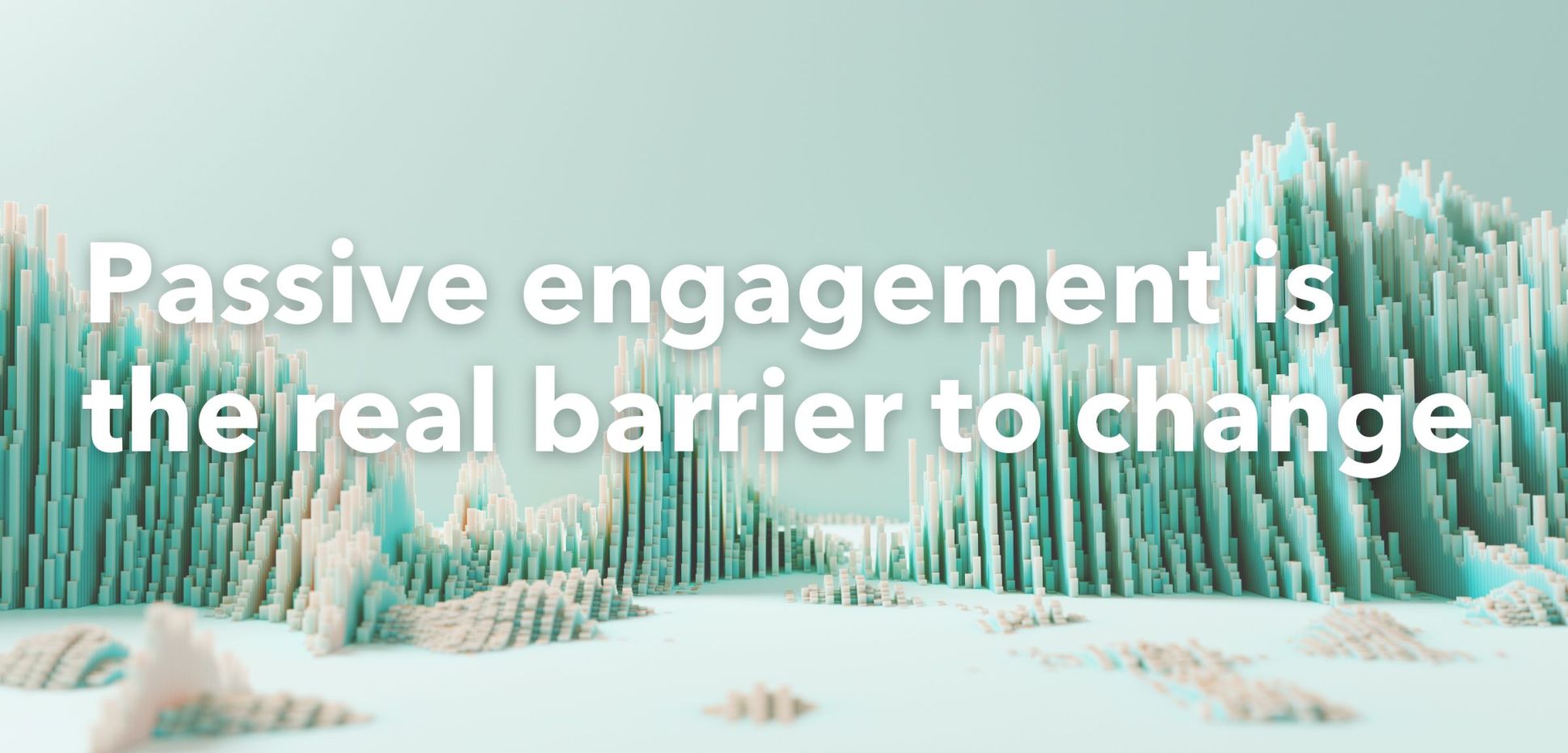Change and passive engagement

Making change happen on an organisational scale can be a monumental task. Too often, organisations fall back onto a programme of work that generates a lot of tasks and ticks a lot of boxes, but leaves the participants at best disinterested – at worse, passively engaged.
(We’ll come back to why that might passive engagement may be worse than disengagement.)
Here at Sheppard Moscow, we have long advocated the power of social movement to create and sustain change through an organisation – enabling communities of action. This comes at a particular tipping point, when there is a critical mass of people in the organisation who volunteer their energy and agency to support and enable change – not because it is a dictate or programme of work; but because they are inspired by it and to do it.
There are essentially two ways of looking at igniting a social movement – one is top down and the other, bottom up.
When we talk about top down, we don’t mean a traditional cascade of information and instruction, but a ripple effect that is started and sustained through the leadership team and pervades the organisation, and founded on experimentation and action. We’ve employed this method successfully across large, global enterprises – and it requires an intent and commitment that sustains.
The alternative is essentially the ‘jealousy model’ – creating an energy in one part of the organisation that takes off and encourages other parts of the organisation to join the movement. For example, for an organisation that is going through a significant integration, we were invited to work with one team in one location to help them work through the challenges and possibilities of the integration. Fires have been started here that have attracted other areas of the business to come on board and now there is real momentum, fuelled by the teams (rather than simply the leaders).
How can you make this happen? In simple terms, it comes down to two things:
- Unpicking the norms of how teams and individuals do things, to explore different and better ways of working
- Creating an excitement even where there is pain – using an interactive approach to explore and engage the possibilities of the new

The whole approach is focused on bringing colleagues on the journey – and so we return to the thorny area of passive engagement. This is where a leader or colleague is on board with the change, and even implements it in their immediate environment, but does little or nothing to support, advocate and inspire others more widely. Often, this is more dangerous than active resistance, at least with the latter you know where you are! People who are actively engaged will be ‘culture carriers’ and ‘change champions’ who go out of their team dynamic to support change across teams and around the organisation. We can tell where active disengagement is – and they can be a good source of insight into discontent about change – but it is the passive engagement community who are often the silent majority that slow down or stop change – almost inadvertently.
If you're interested in learning more about our approach to and insights in organisational change, check out our blogs Don't Manage Change and Change for Good.

 Deborah Gray
Deborah Gray 
 Aoife Keane
Aoife Keane 
